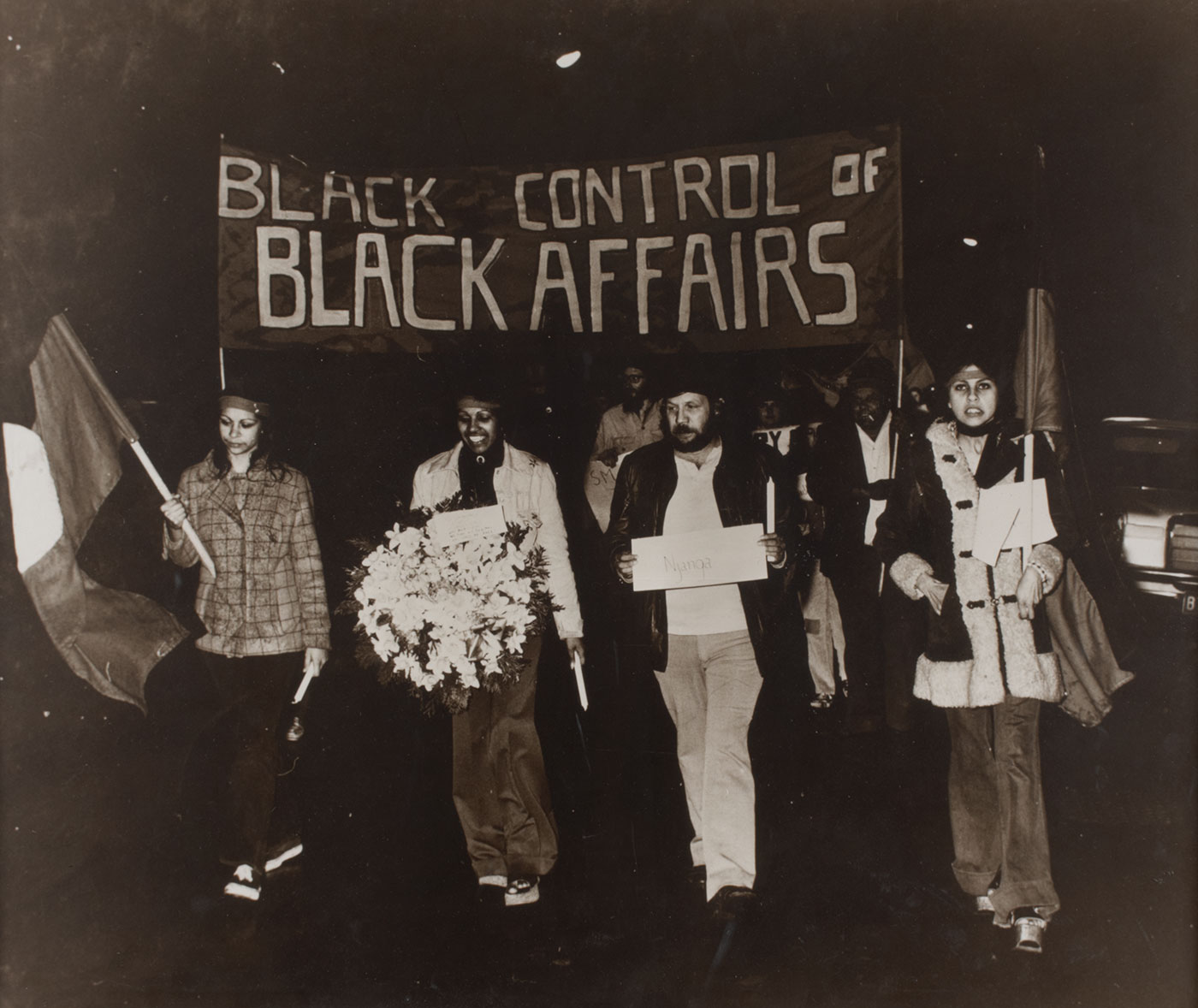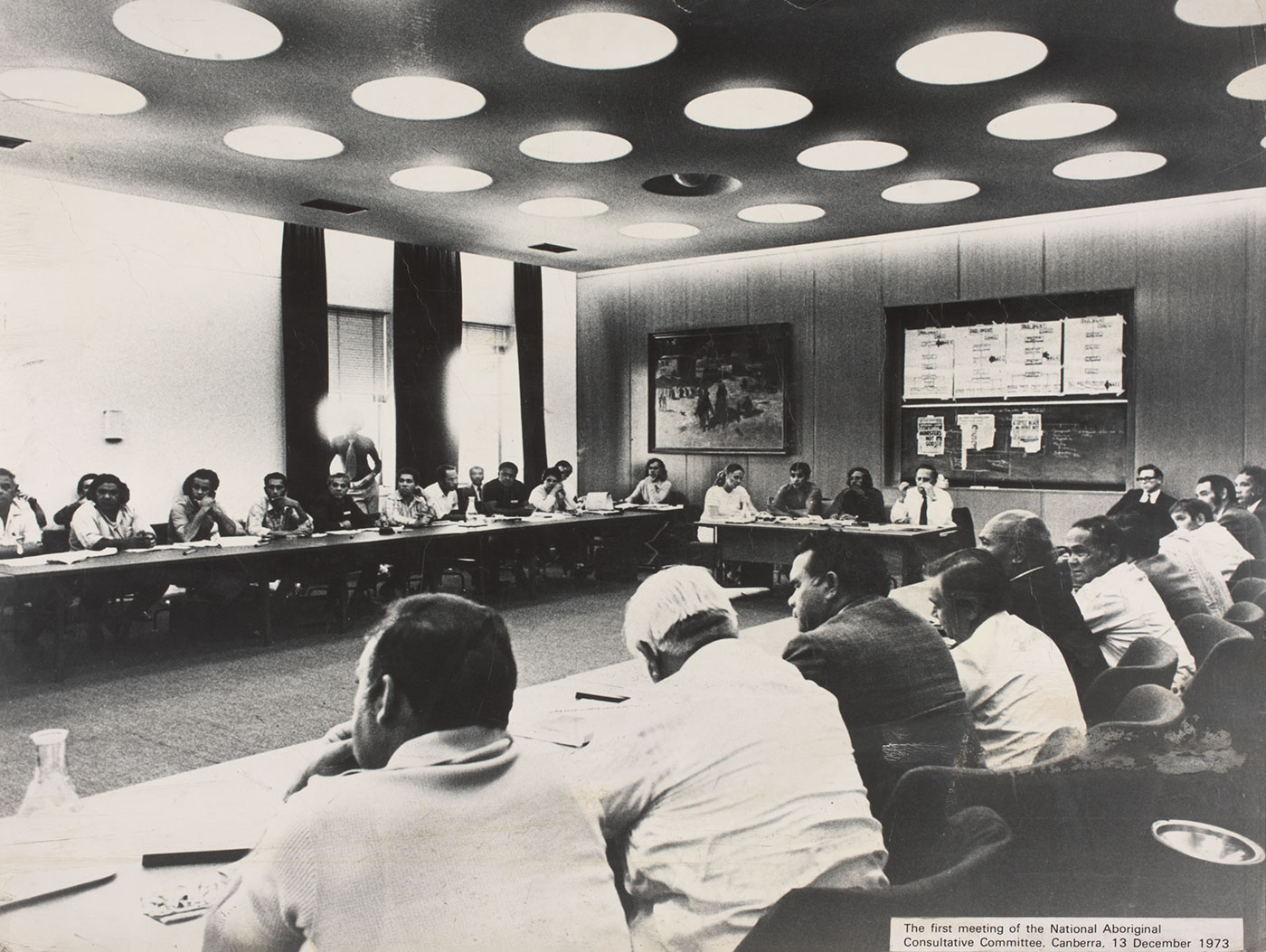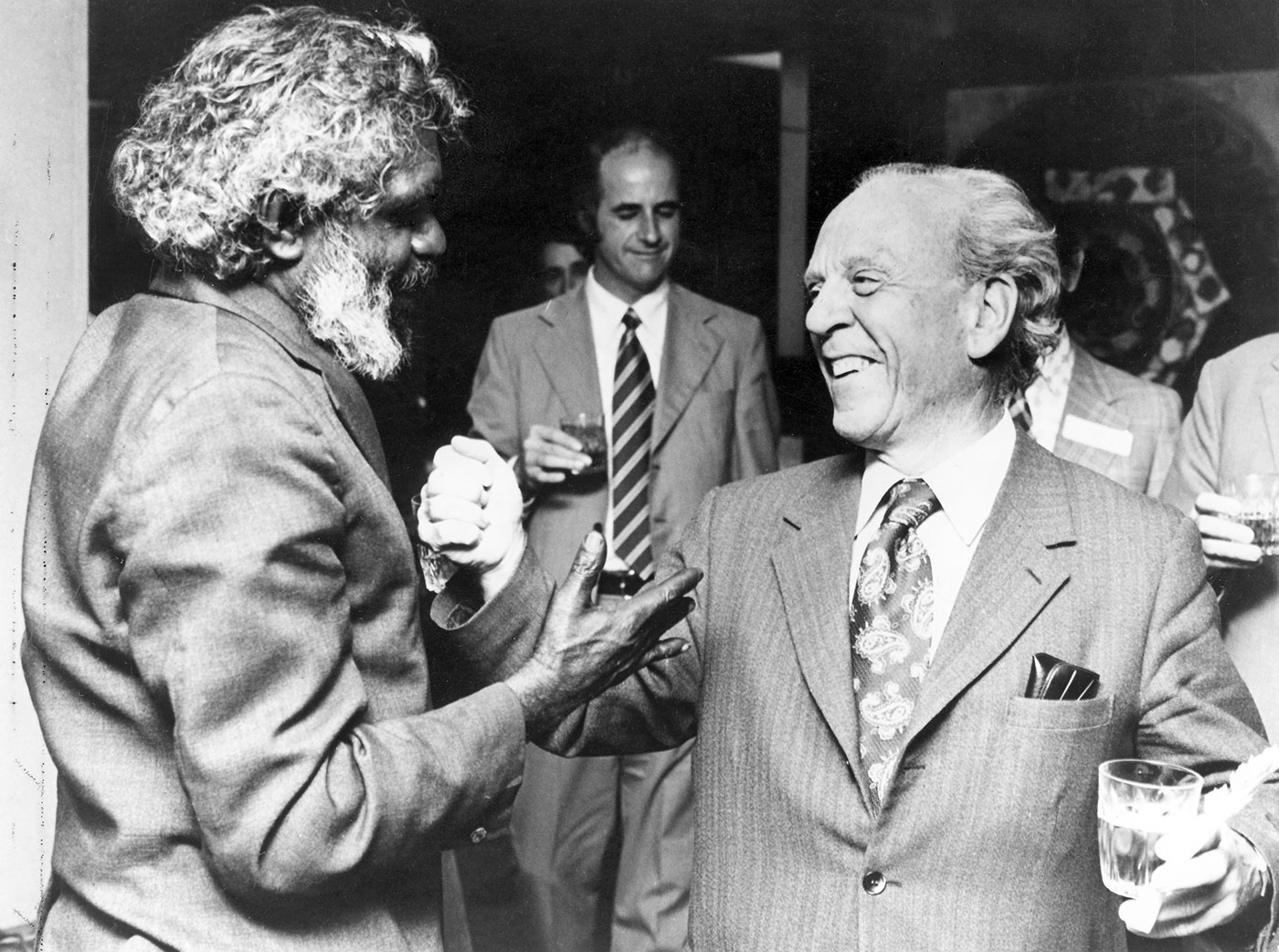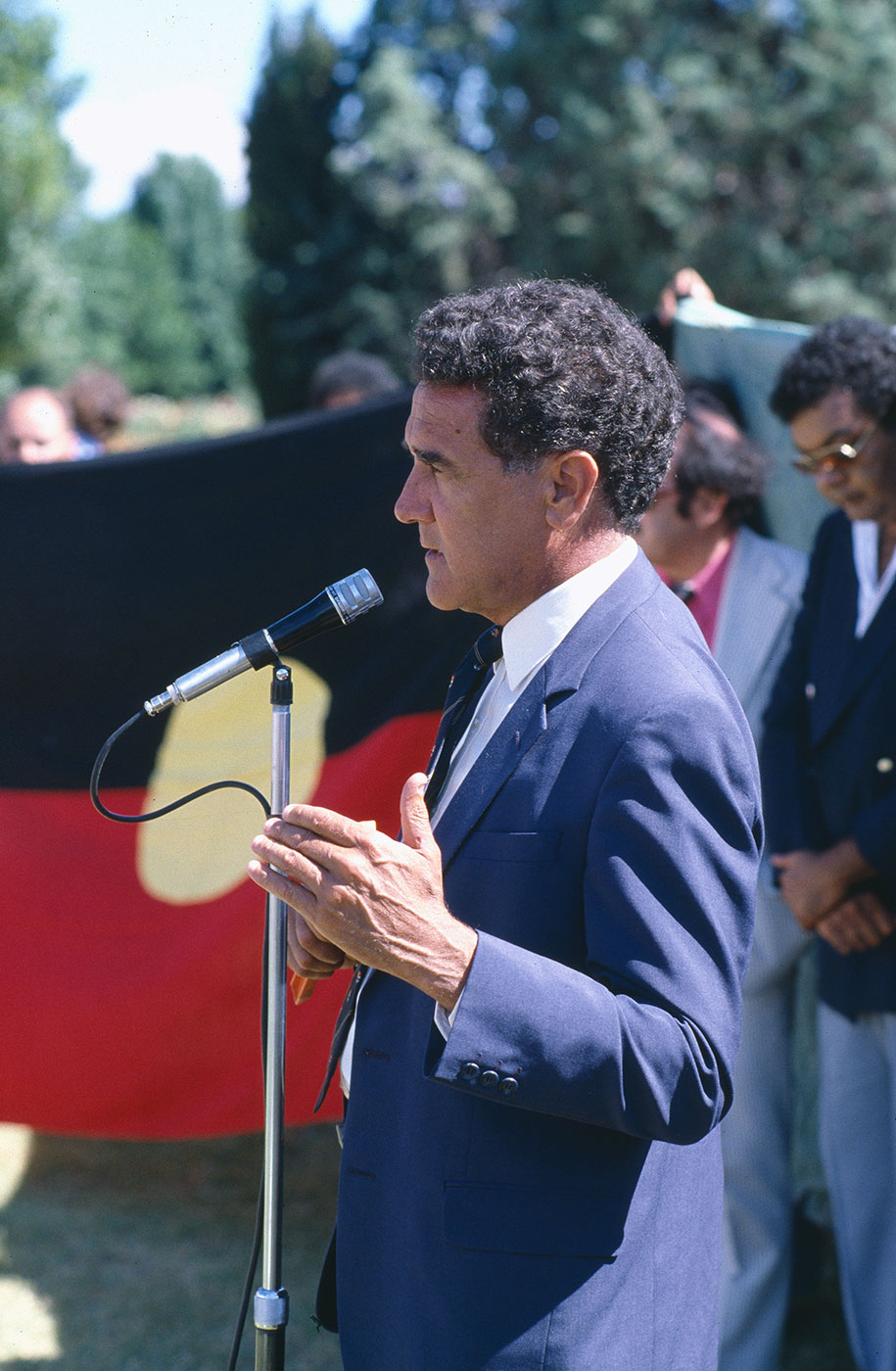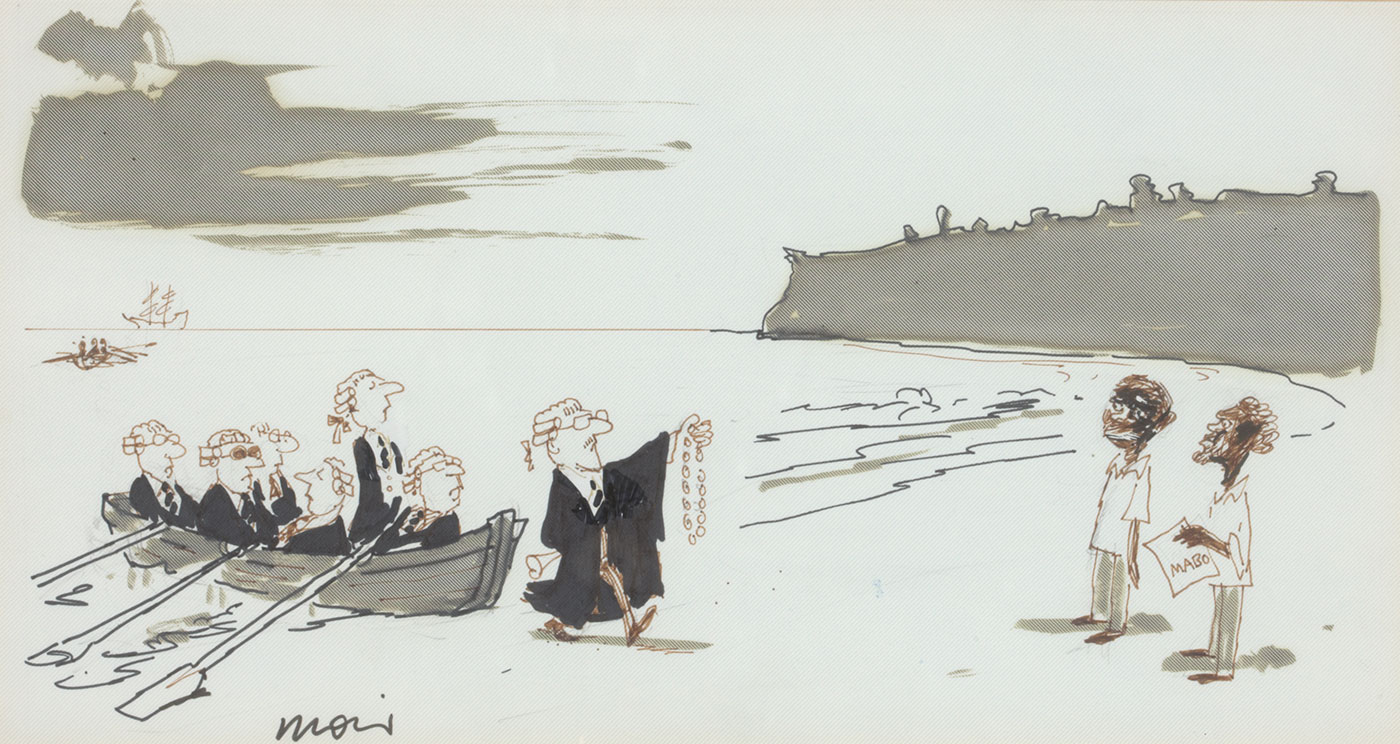Key events in Aboriginal and Torres Strait Islander history 1967–2005
This timeline includes events of national importance in the life of Australia’s First Nations people after the 1967 Referendum paved the way for the adminstration of Indigenous affairs becoming the responsibility of the federal government.
A collection for the future
After the closure of ATSIC, no one knew what would happen to the artworks and objects that had been removed from the organisation’s office across the country. Many staff members felt it was important that everything should be kept together. The entire Aboriginal and Torres Strait Islander Affairs Art collection is now part of the collection of the National Museum of Australia, where the objects can be preserved, studied and displayed in the future.
This highly significant collection illustrates an important part of Australia’s history. It is entwined with the story of the relationship between government and Australia’s Aboriginal and Torres Strait Islander peoples from 1967 to 2005.
Many of the artworks and objects are also things of great beauty. And all of them are like objects in a time capsule – a time capsule representing the regional and stylistic diversity of Aboriginal and Torres Strait Islander art and culture over nearly 40 years.
The National Congress of Australia’s First Peoples
After the closure of ATSIC, the Australian Government appointed an advisory body, the National Indigenous Council, to provide advice on Aboriginal and Torres Strait Islander issues. However, following the election in 2007 of a Labor government, the Council was abolished.
In 2009 a steering committee, chaired by Australian Human Rights Commissioner Tom Calma, recommended the formation of a new independent body, the National Congress of Australia’s First Peoples.
This congress commenced operations in 2010. It is responsible for providing advice to government on, and advocating for, Aboriginal and Torres Strait Islander peoples. However, it is not responsible for providing funding or programs to communities, as ATSIC had done, nor is it answerable to government.
Explore more on Off the Walls
